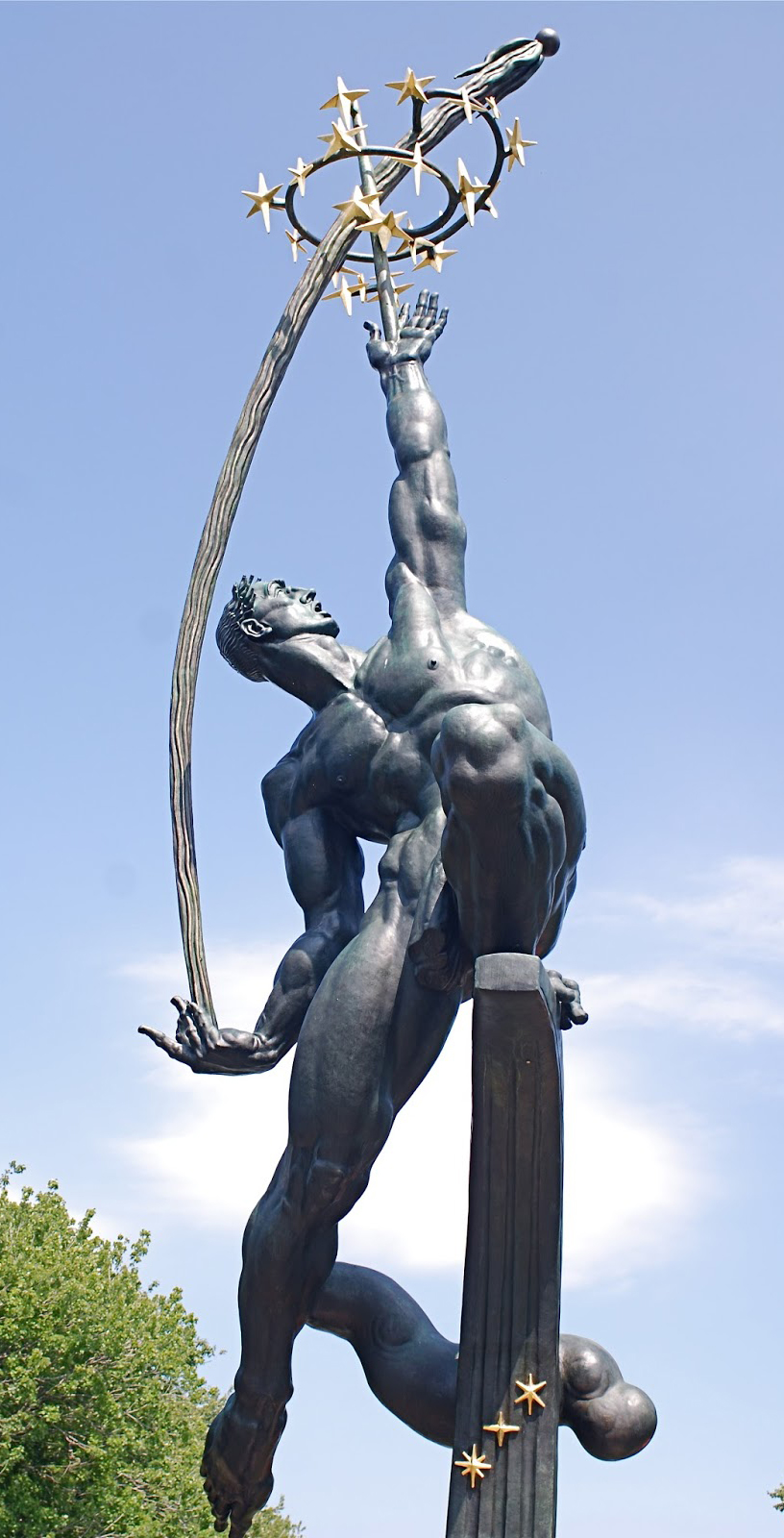According to Alexander Contini, his wife often wonders why there are so many out-of-the-way stops that he makes when they take trips. The answer is simple. As the amateur genealogist, biographer, archivist and curator for the Contini Family Collection, he visits and photographs sculptures cast by members of his family. Eugenio Contini, along with his nephew Attilio and his sons, cast many of the statues for public monuments throughout the United States and even overseas, such as Huntington’s statue of Abraham Lincoln in Salzburg, Austria.
The Continis cast Solon Borglum’s Buckey O’Neill: The Roughrider for Prescott, Arizona and his General Gordon on the grounds of the Georgia State capitol. They cast Gertrude Vanderbilt Whitney’s Buffalo Bill Cody for Cody, Wyoming and A. Phimister Proctor’s Theodore Roosevelt for Portland, Oregon. Attilio is even featured in a 1922 film, ‘The Making of a Bronze Statue’ produced for the Metropolitan Museum of Art, which documented the creation of Proctor’s statue.
Laura Gardin Fraser’s American History Panels and her husband, James E. Fraser’s George S. Patton, are both at the U.S. Military Academy at West Point, New York. Attilio cast Evelyn Beatrice Longman’s bronze doors for the U.S. Naval Academy Chapel at Annapolis, Maryland and Georg Lober’s George M. Cohen in Times Square. They also cast the bronze doors of St. Patrick’s Cathedral in New York for the sculptor John Angel.
James E. Fraser employed Attilio and then his son, Cesare for all of his sculptures created during the 20th century. There are a number of pieces in Washington, D.C. that the Continis cast, including the dual statues of Heritage and Guardianship at the National Archives and Alexander Hamilton and the Albert Gallatin at the Treasury. The Continis cast Donald DeLue’s Washington at Prayer at Valley Forge, as well as DeLue’s Spirit of American Youth Rising from the Waves at Normandy. They also cast the Rocket Thrower for the 1964 New York World’s Fair in Corona, New York.
The Continis are likely the only casting experts mentioned in the biographies of American sculptors. Some sculptors such as Stanley Bleifeld, praised the work of the Continis saying, “[Cesare] Contini’s willingness to cast my work even though busy with work for such others encouraged me.”
So, what happened to the Contini family and their craft? World War II saw five Contini sons in the service of their country in four theaters of the war: Europe, India, the Pacific and America. When they returned to post-war America, there wasn’t enough work to support their new families. All but Cesare turned to other employment. The 1950s would have been the time that the next generation would have learned the family craft, but figurative sculpture had given way to “modern art” sculpture which used a cutting torch and welding instead of casting. The Continis continued to cast statues, but not at the pace of the 20s and 30s. The last piece of note that the family cast was The Lone Sailor by Stanley Bleifeld for the Navy Memorial in Washington, D.C.
Some of the younger members of the family helped Cesare on several pieces during the 1960s and 70s, but the next generation studied law and engineering. They became school teachers, mechanics, college administrators and career soldiers. By the 1990s, plaster as a mold-making medium gave way to rubber.
Alexander Contini’s contribution was as the truck driver, transporting pieces from the studio on 12th Street in Manhattan to the foundries in Queens, or to the airport for shipment to European foundries. He also had the pleasurable job of cleaning the studio, immersed in the smell of linseed oil and plaster dust.
When the family brownstone home and studio property in lower Manhattan were to be sold in 1991, he found a treasure trove of papers, photographs and artifacts in a dumpster; thrown there by the men hired to get the house ready for the sale. He recovered as much as he could, including the tools used by his grandfather, the candlestick phone on which he discussed jobs with many of America’s foremost sculptors and the typewriter used to prepare invoices for the work performed for those sculptors.
Alexander now acts as the narrator for the Contini’s Family Story, a PowerPoint presentation titled ‘Behind Every Sculptor’ and has shared their story with numerous historical societies and Italian cultural organizations.





